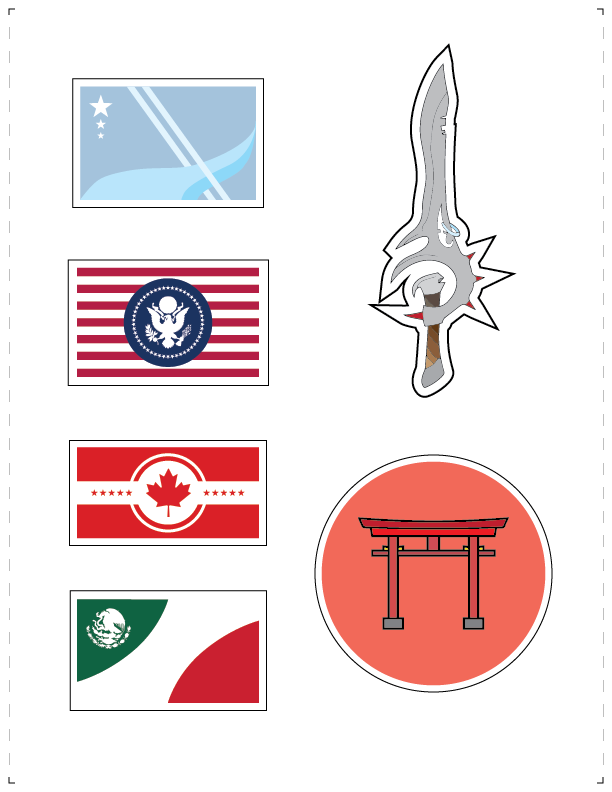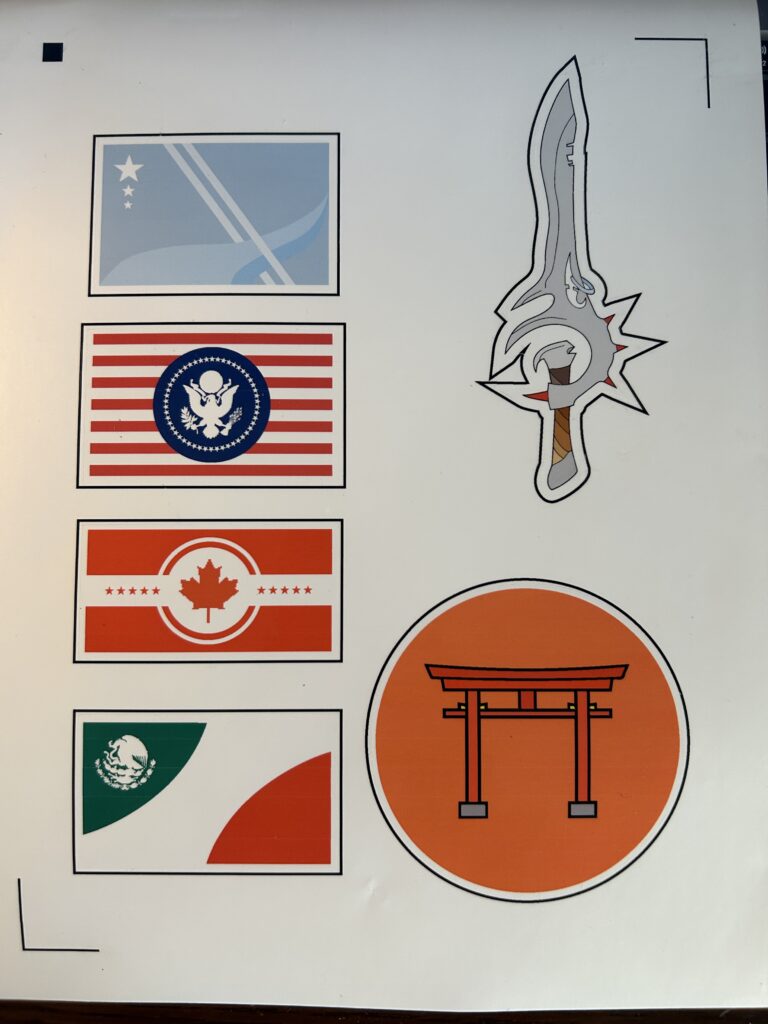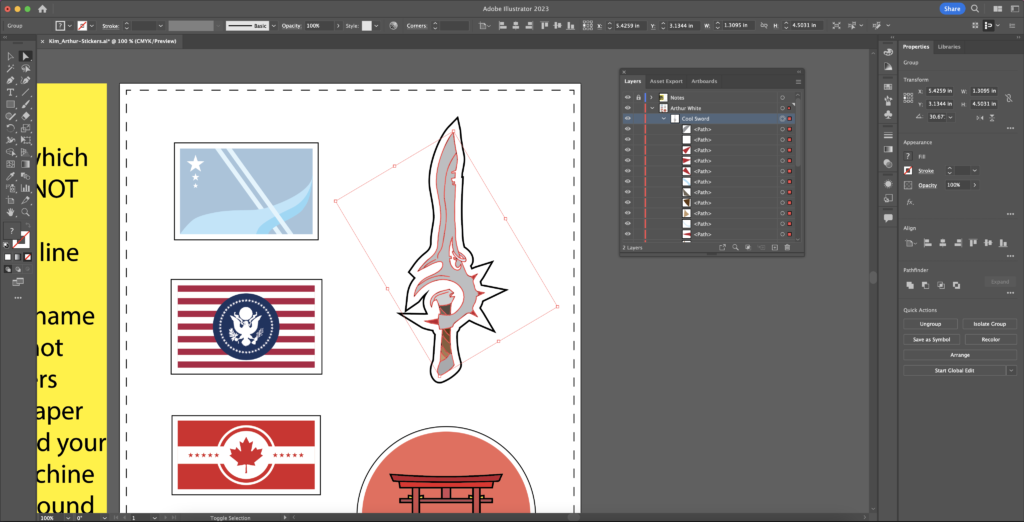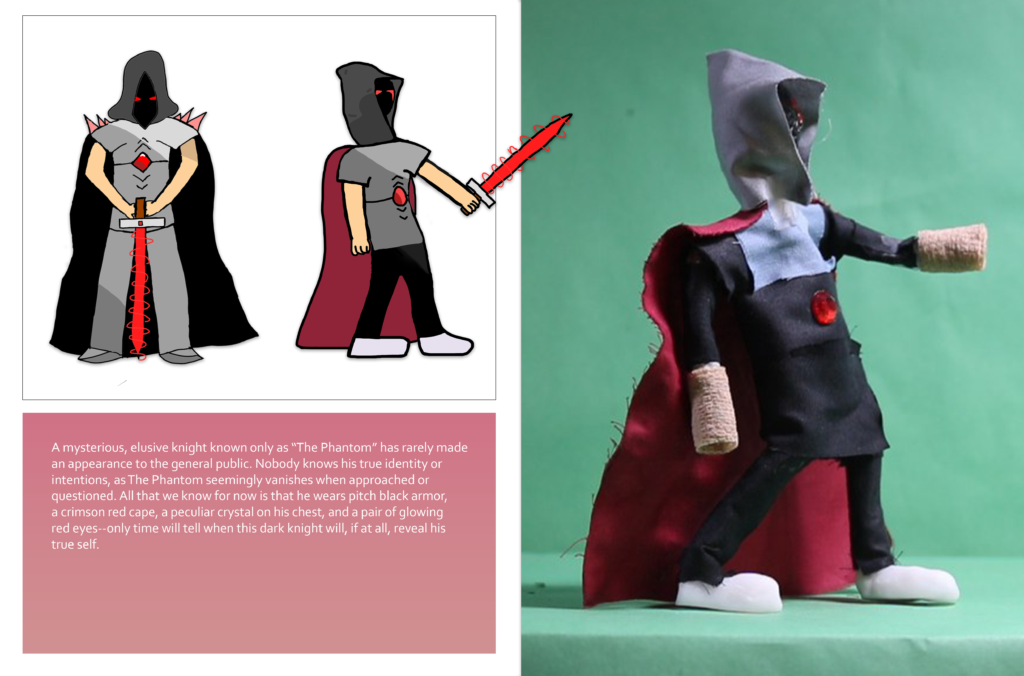Introduction
The visual narrative project gave me the opportunity to focus on storytelling and the process of translating that knowledge into different forms of media. In English, I wrote a flash fiction narrative involving a few characters set in a particular location. In Digital Media, I learned how to use Adobe Illustrator to produce vector illustrations as well as how to further use Pro Tools to edit my Short Story audio. In animation, I produced a narrative animation in a team of 3 using Photoshop and After Effects.
The Visual Narrative Project was the most involved and creative unit over all 3 classes so far, and it definitely taught me a lot of new techniques. I can confidently say that my storytelling skills have improved over this unit and my skills in digital art have vastly expanded since the start. I hope that I will be able to continually apply these skills in the future.
Story

The assignment for English was to write a concise fictional story involving only a few characters in one setting. The story was intended to convey a sense of deep meaning but only be a few pages long at the longest, so I employed several writing techniques in order to effectively accomplish this. For example, setting up the scene in vivid detail is an important part of immersing the reader in the world you have created. I also built up tension as the story progressed in order to hook the reader until it reached a climax. One of my biggest inspirations for this story is the social pressure that people face so that they “fit in” with society. People find it embarrassing or disrespectful to appear or act a certain way in public, and I wanted to encapsulate that experience in this short story.
After I wrote the story out digitally, the next task was to record it. To do this, I used a portable audio recorder and stood inside a closet. From there, I recorded myself acting out the story, redoing parts if necessary. To assemble the recordings into a final product, I used Avid Pro Tools. I added music, sound effects, and cut the clips as needed in order to create the finished recording.
What I valued most out of the short story was the creative aspect of the project. In both the writing and audio, I was able to shape and modify how the final product would look or sound–everything was under my control. I enjoyed having this freedom and I think that is really what allowed me to succeed during this project.
Parting Shadows
The monotone gray clouds swirl and dance across the sky, casting a dark shadow over the nearby skyscraper. Tires skid frantically over the wet streets, readjusting themselves moments later to continue on their path. The massive glass windows lining the city hall reflect glimpses of red and white light through the condensation, blinking in and out of existence as cars round the corner. Stepping out onto the street, a car whizzes by inches in front of Max’s face, seemingly unaware that somebody was about to cross, drenching him in oily water. Max scoffs, glaring in the direction of the careless car. He looks down at his feet, hesitantly removing the black, featureless mask off his face, and shakes the water out from inside. Fastening the mask on as quickly as he can, Max once again attempts to cross, this time ensuring that the coast is clear.
As Max approaches the opposite curb, he notices a boy, not older than 12 years, staring up at the glass walls of the city hall. He seems to be lost in thought yet intently focused on something Max could not readily identify. His parents are nowhere to be seen, leading Max to believe the boy had become lost somehow. Max quickly averts his attention to the path in front of him, realizing that none of this is of his concern. As he passes by the corner of the city hall, he catches a glimpse of the boy moving towards his position at a quick pace. Suddenly, Max feels a rush of adrenaline, fearful of the boy’s intentions. He accelerates his pace as well in an impulsive reaction to the boy’s sudden movement, panic overcoming him. Out of the corner of his eye, he thinks he can see the boy around the corner.
The boy calls out to Max. It feels as if the entire world has stopped revolving and everyone has fixated their gaze on him. He thought he could evade them forever, but it seems that his luck had run out. This is it. There’s no more running now. Max thinks, slowly turning around to face the curious boy. He can feel his cheeks burning in the ice cold air; the mask is his only saving grace protecting him at this very moment. Max braces himself for a whirlwind of insults–he knows from experience what terrible phrases kids could come up with these days. Instead, however, the boy simply stands there for a few seconds, with an inquisitive look on his face.
“Are you okay?” The boy asks.
Max is completely frozen in place, unable to move or even comprehend what the boy had just said. When was the last time he had a conversation? Five years ago? Thoughts are swirling in his mind like a tornado, uprooting and displacing memories. Regaining composure somewhat, Max manages to nod his head jaggedly.
The boy steps closer to Max, taking an object out of his pocket as he does so.
“I think I saw you at the arcade earlier today.” The boy says.
Max feels chills shoot up his spine, sending a shockwave of fear throughout his body. How does he remember? What does this boy want? His head spins even faster.
“Well, you left something there. It seems to be important, too.” The boy extends his arm towards Max, a small metallic object in his palm.
Max feels his eyes widen under the mask. How could he forget? He snatches the object from the boy and shoves it into one of his pockets. The boy remains standing, watching Max attentively, apparently unfazed by what Max had just done. After a few moments, the boy smiles, putting his hands back into his pockets.
“I knew it was important!” the boy exclaims. “I’m glad I could help.”
With that, the boy turns around and walks away. Max only stares as he fades away into a large crowd of pedestrians. His hands tremble as he pulls out the metal object from his pocket. A gyroscope; one of Max’s most prized possessions during his childhood that he always carries with him. His parents had given Max the gyroscope as a birthday present many years ago, and he had always been fascinated by the contraption. It is his only memory of both his parents, who were killed during the Third International War. Max tucks the gyroscope back into place, relief washing over him. He gazes one last time into the foggy haze obscuring the crowd of people the boy had vanished into, and then turns around to resume his journey.
And for the first time since the war, Max feels a reassuring smile creep onto his face.
Illustrations
Over the course of the Visual Narrative unit, I learned how to use the program Adobe Illustrator to produce digital illustrations. The two main projects I completed were the Exquisite Corps and a collection of stickers.
The exquisite corps was a collaboration by four people, including me, where none of us knew what anyone else was drawing. The only limitation we had were the start and end points of each illustration, which ended up creating a fluid composition in the end.




My inspiration for this project began with my interest in vexillology (the study of flags) so I knew I had to do something related to that. I began designing my own flag that I thought would represent me and my personal illustration style, and I am very proud of the result. After that, I decided I wanted to redesign a couple of flags in North America, so I did that as well. However, I still felt that I needed something else to fill the space, so I drew a sword that I referenced online and a shrine. Drawing the sword was the most difficult task, but I think my skills with the pen tool really helped me. If I had more time, I would definitely redesign more flags as that was my favorite part of this project. Overall, I think this project is a good representation of myself and what I enjoy doing, and I am proud of the final result.
Music
The main product for this portion of the Visual Narrative unit was the Parody Song Production. I also produced a mashup of 5 songs in Pro Tools.
For the parody, I chose a song with lyrics and wrote a parody off of it. After that, I removed the vocals from the original track using Pro Tools and transposed my vocals onto it, creating the finished product. Obviously, this is supposed to purposefully sound bad, so it’s not going to sound professional.
To remove the vocals in Pro Tools, I first split the audio into right and left tracks and then slightly offset one track, which has the effect of canceling out certain frequencies. Then, I used an EQ plugin to cut out the high end (which is where the vocals are).
Never Gonna Write a Song
Arthur Kim
Original Song (Never Gonna Give You Up – Rick Astley)
(Verse)
I’ve been thinking too hard
I just don’t know what I should write (should write)
My brain is fully malfunctioning
It’s been a struggle all day all night
I just wanna give up on these lyrics
Gotta go do something else
(Chorus)
Never gonna write a song
Never gonna sing along
Never gonna think of lyrics to type out
Never gonna stop crying
I just wanna say goodbye
I really couldn’t think of something to write here


Mashup of Songs
Animation
In animation, I produced 3 main projects — A puppet walk cycle, lip sync animation, and narrative animation. Over the course of these productions, I further developed my Photoshop and After Effects knowledge. The narrative project was the most ambitious animation I have created thus far, and I am satisfied with how it turned out.
The first animation I created this unit was the puppet walk cycle. This was a heavily involved project that took a long time to complete. The first step was creating the puppet itself. I used wire, cloth, clay, and paint to make a dark knight puppet. I also drew my character design in Photoshop and added a small synopsis, which formed my Character Bio.

Next, I needed to animate the puppet that I created. To accomplish this, I drilled holes into the bottom of the puppet’s feet and screwed them to a pegboard. This ensured the puppet wouldn’t fall over and remained in the same position. Then, for each frame, I took a photo, adjusted the puppet’s arms and legs slightly, took another photo, and repeated the process. This resulted in a stop motion animation of my character.
Next, I began animating the digital version of my character. To do this, I used Photoshop. The background had to be green in order to remove it in the final animation.
Finally, I transposed the digital walk cycle and the stop motion recording onto an image and added music to the composition.
Another significant project I produced was the Lip Sync animation. For this animation, I chose an audio clip to lip sync with a character I drew. I wanted to go for something unique, so I chose a soldier speaking into military comms which also muffles the voice. This makes the animation look good even if the lip movements aren’t accurate because you can’t really tell what is being said anyways.
The Narrative Animation was the pinnacle of this unit and really allowed me to demonstrate my animation skills. This was the most difficult but rewarding animation I made thus far, and I am proud of the final result. The animation was a team effort consisting of 3 people (including me) in which we had to create something that told a story. Our group agreed on the idea of a sentient puzzle piece that is trying to find true love. I’d like to thank my group members, Alexis and Eli, for working with me on this project–they both created the first two scenes while I took the ending.